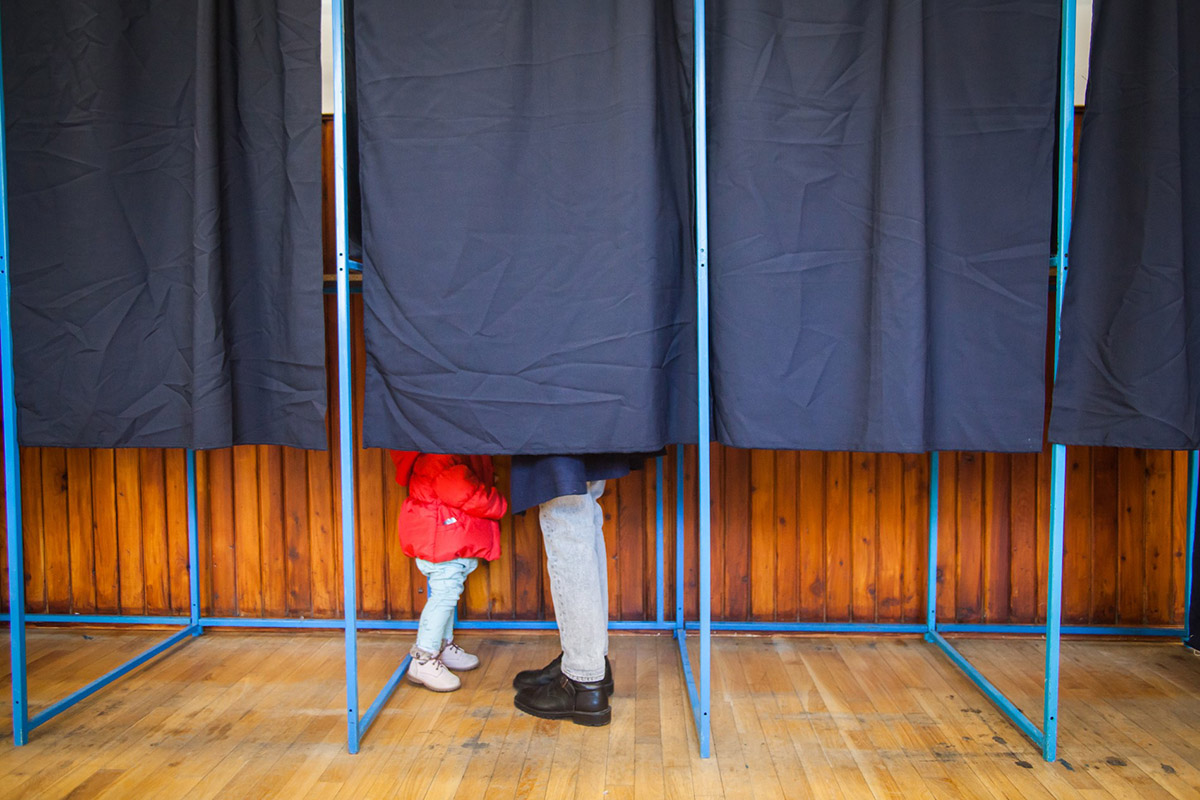
Election Day is a great opportunity to teach kids how voting works and why it’s important for everyone to have a say when it comes to important issues. Plus, the issues themselves usually have connections to Jewish values like caring for animals and the environment (tz'ar ba'alei chayim; bal taschit), feeding the hungry (maakhal revi’im), and making sure that everyone has enough (tzedakah).
The books and activities below can help teach your children about the importance of elections, voting, and forming their own opinions, and even of arguing. Yes, arguing.
In addition to the election activities below, you’ll find some PJ Library book suggestions that relate to issues often represented on the ballot.
WATCH
These videos for kids and by kids can help explain voting at an age-appropriate level.
In the Neighborhood Voting Booth from Daniel Tiger’s Neighborhood
Daniel Tiger steps inside the voting booth. He looks over his options and thinks about each choice.
How Grown-Ups Vote from Daniel Tiger’s Neighborhood
Is your child going with you to the polls? Watch this fun clip to learn more.
Election Day from Sesame Street
Even muppets vote!
Kids Explain Why Voting Is Important from BuzzFeed Kids
Kids talking to kids about why making your voice heard is important.
READ
Recommended for ages 2 to 3
Ballot issue: Conservation and the environment
Why is it nice to have a tree? This book describes a variety of ways in which people make use of trees and explains some of the many reasons that they are so important to us all. For more books about conservation and the environment, visit 10 Children’s Books to Read on Earth Day.
Recommended for ages 8+
Ballot issue: Immigration
Anna and Solomon, a young Russian couple, wanted to move to America — but they could only afford one ticket at a time. Solomon went first, and sent a ticket back for Anna -- but then something unexpected happened. PJ Library also recommends these children’s books about immigration.
Related: How to Talk to Kids About Immigration
Recommended for ages 5 to 6
Ballot issues: Hunger and unemployment
While working in his grandfather’s bakery, Benny learns the joys of giving and receiving, caring and gratitude. Want to go further? Help kids understand the mitzvah of feeding the hungry.
Recommended for ages 8 and up
Disagreeing does not necessarily make you disagreeable. Just ask Ruth Bader Ginsburg, the first Jewish woman on the US Supreme Court. When she was a young girl, lots of people told her she didn’t have what it took to do the things she wanted to do, but she disagreed -- and proved them wrong. Now she shows the whole world that sometimes it’s important to say “I dissent!”
DO
Take Your Kids With You to Vote

Having kids join you in the voting process is the best way to teach and involve them. All 50 states permit children to accompany their parents at the polls and in the voting booth. Some states restrict the number of children allowed, so call your local election commission to verify. And remember to take pictures outside afterward since photos aren’t allowed inside the polling place.
Make a Ballot Box

Turn an empty tissue box into a lesson in civic action and practice voting at home. You can come up with a simple family vote like deciding on dinner or a weekend activity.
Visit a City Council Meeting or Legislative Session

Older kids might enjoy getting to see how rules and laws are put in place. If you’re near a capital city in your state or province, tour the legislative building or attend a session if they’re open to the public. Most city councils also open portions of their meetings to the public.
FOR PARENTS
More than two thousand years ago, two leading centers of Jewish thought were the schools of Beit Hillel and Beit Shammai. Hillel and Shammai were sages, and they disagreed about many things. They disagreed about things we might find trivial today—should nine lights be kindled at the beginning of Hanukkah or at the end? They disagreed about matters that remain deeply significant—is it always wrong to lie, or are some untruths acceptable and even welcome?
The followers of Shammai and Hillel debated hundreds of ideas, and their conflicts shaped the oral tradition of Jewish law. While they were debating, members of Beit Hillel and Beit Shammai maintained strong peaceful relationships; they respectfully disagreed, often married into one another’s families, and sometimes even switched positions and beliefs.
Despite their differences, the followers of both Shammai and Hillel found their arguments to be a way to make their communities stronger. The concept of machloket l’shem shamayim means “dispute for the sake of Heaven,” and offers a strikingly Jewish model for constructive disagreements. Rather than become stressful conflicts, this idea helps people see debate, voting, and campaigning as a way to learn more and explore a greater truth.
MORE
Let's Talk About Voting via the ADL
More About Taking Kids to Vote via Girl Scouts
Preschool Voting Activities via Things to Share and Remember
5 Books to Read With Your Budding Activist
Did your kids go with you to vote?
Show off a picture of your family and your “I Voted” sticker using #pjlibrary.
November 5, 2018